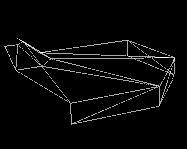Is anything impossible?
-
Jeff, that screenshot, that's what I have in mind with Patch modelling in SU. After making that Teapot plugin, which consisted of Bezier Patches - I have been toying with the idea of making a tool to make parametric patches in SU.
There are two ways around this I see it working:
Like 3DSMax' Patch tool - you have 4 vertices and control handles attached to each vertex. (there are 4 points then which I then have to interpolate)
Or, having direct control to each 16 control points. -
@thomthom said:
Jeff, that screenshot, that's what I have in mind with Patch modelling in SU. After making that Teapot plugin, which consisted of Bezier Patches - I have been toying with the idea of making a tool to make parametric patches in SU.
the problem (or challenge) i see with creating a simple patch tool is that it would work like soap skin & bubble in that it's only thinking of the patch itself and it's outer edges while ignoring the mating surfaces.. that's the trick, getting the mating surfaces and the patch to blend smoothly..
here's a surface analysis of the picture i posted above. all of the surfaces and their shapes are considered instead of rhino simply trying to fill in a hole.

-
"mating surfaces"?
-
@thomthom said:
"mating surfaces"?
ha, yeah, i was hoping that was understandable

basically, taking the picture i posted, the mating surfaces(?) are doing 3 different things..
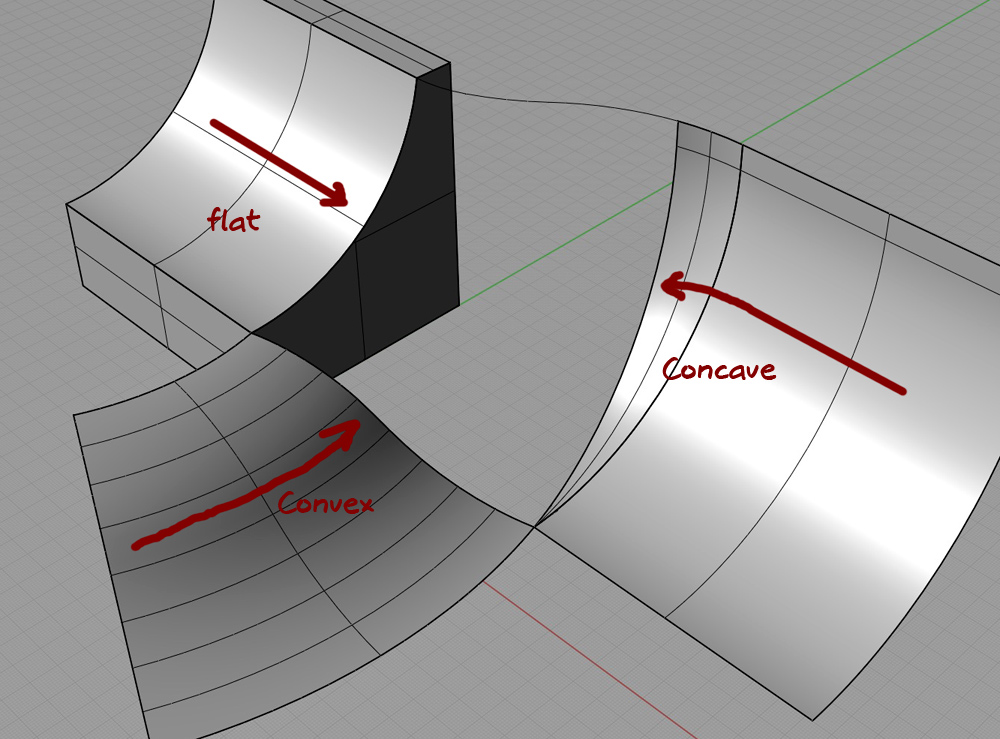
i think it would be very hard (impossible?) for SU to analyze the surfaces in that shot and ensure the resulting patch blends properly.. i think it would create a bunch of kinks instead of one smooth continuous surface.
-
for example, i think this would happen with a sketchup patch tool:
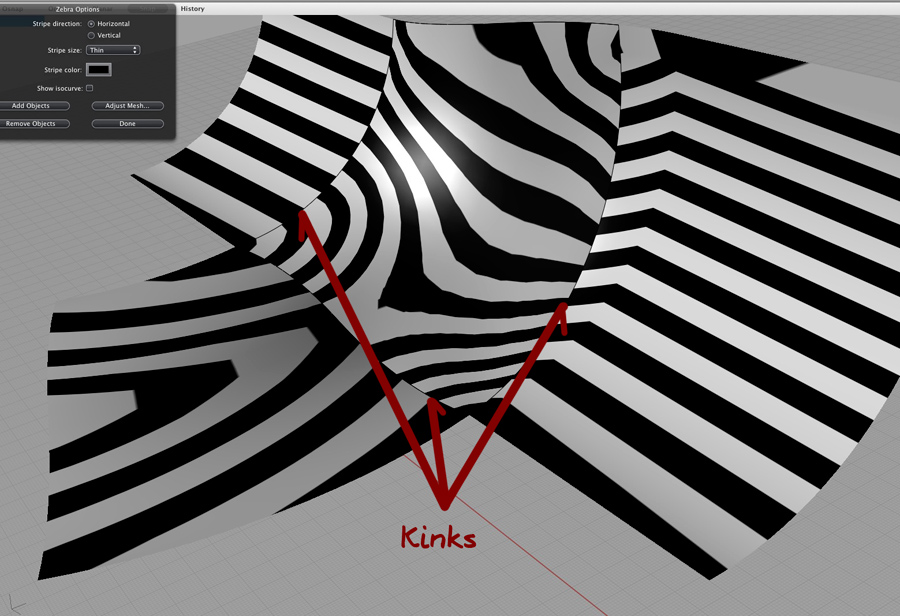
for that, i only used the edges to make a patch instead of considering the adjoining surfaces.. while it will fill the hole and possibly even look OK on the computer, it's unusable for real world applications.
for comparison, the smooth one again:
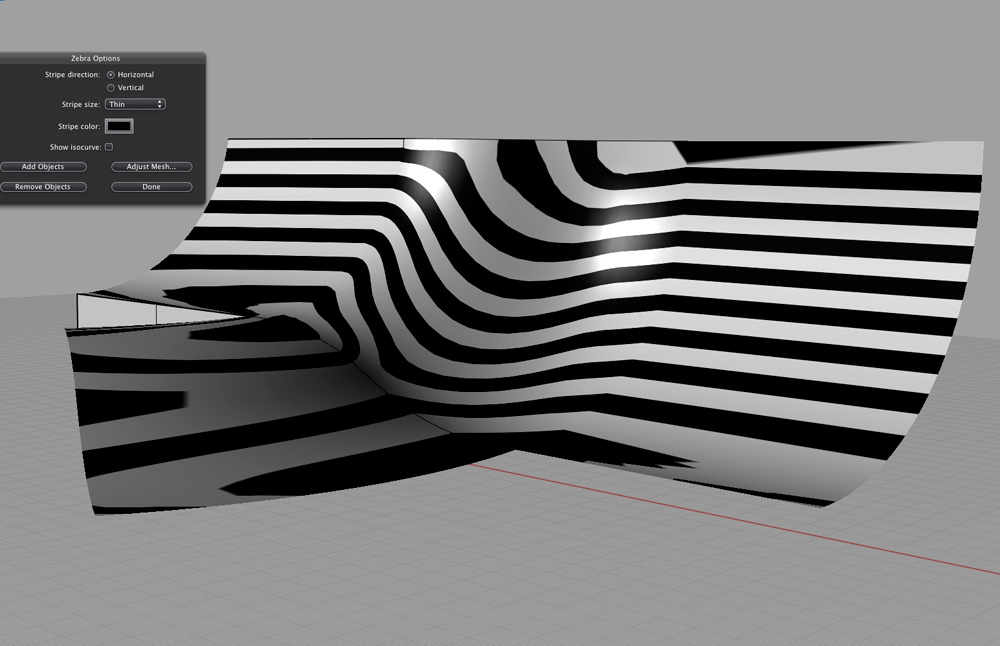
-
So you're talking about kinks in UV mapping - not the geometry?
-
no, the geometry.. those zebra stripes are just a rhino feature for analyzing smoothness & nothing to do with texture mapping.. i guess it's hard to describe how to view it unless you've tried it yourself..
it's basically telling you that if you were to run your hand over some of the blends (in the bad version) that you would feel a noticeable valley near the concave blend and a peak at flat blend.. a bit of both on the convex blend..
the valley created by the concave blend is very bad.. here's a shot looking down at the structure from above/behind.. you'll see the patch comes in at a hard angle an creates a very noticeable valley instead of a smooth continuous surface.
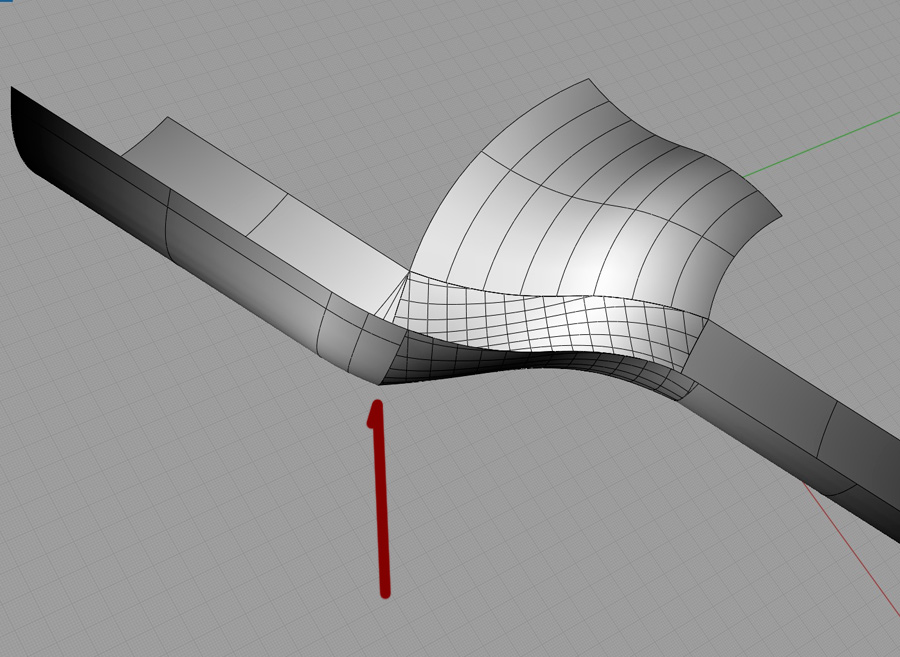
-
It should be possible to make transitions between patches smooth.
-
And another story is to try manufacture that kind of shapes from SketchUP! I also started using Rhino.
http://web.mac.com/rhino3dtv/TV/Tutorials/Tutorials.html -
@thomthom said:
It should be possible to make transitions between patches smooth.
i would truly be amazed! that's for sure..
if you're going to go down that route, you'd basically want to make sure all of the bezier splines(?) used to make the patch make tangent connections to the mesh lines in the adjoining surfaces..
-
A Bezier Patch is a set of 4x4 control points. From that a series of Bezier curves is generated in the horizontal and vertical direction. Getting adjacent patches to be smooth should be accomplished by making the opposite control-points tangent to each other. (At least in theory if I understand it correctly.) I should be starting on making a prototype soon.
What I'm also playing around with is Modifier stacks to these patches. So you can add a modifier to extrude (add thickness) to the patches.
-
Another plus with the bezier patches is that UV mapping them should be relatively easy, at it's all in regular quad/triangle grids.
-
Maybe I'm issing something here but according to the images above, SU's most primative tools can be used, namely 'from contours' in the sandbox toolset.
I did a quick mock up.
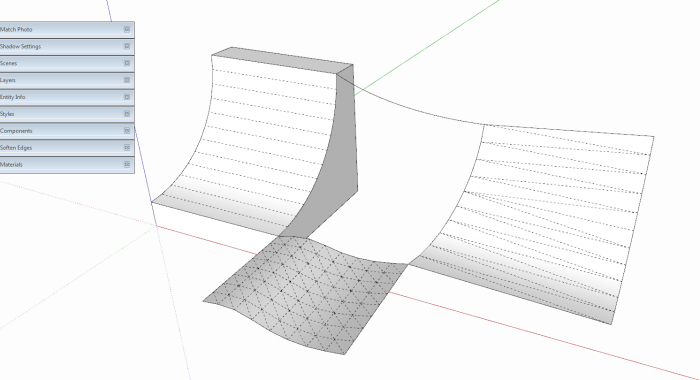
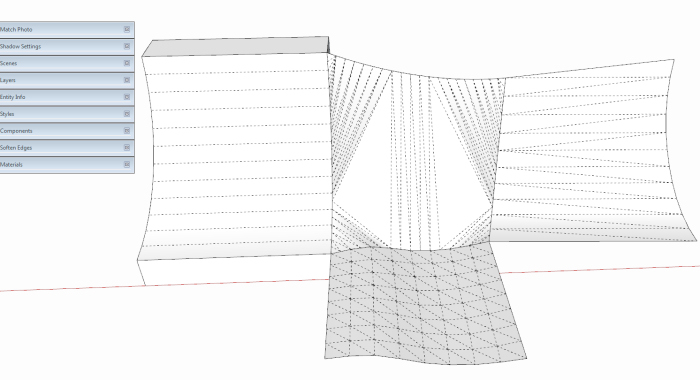
-
@solo said:
Maybe I'm issing something here
yes, i think so..
that's what i'm saying about making something look sort of right in sketchup but it being totally wrong in real world dimensions..for one pete, your blended surface has two giant flat triangles where as the desired surface has no flat areas at all.
-
AND it would never be editable.
-
model this

sorry is that OT? Been enjoying watching you guys outdo yourself. -
What I discovered about Jeff a while ago, and needs to be kept in mind when trying to answer ihs questions:
He designs professional skateboard ramps in Sketchup and they actually get built using his 3d models as a base for dimensions.

So solutions that appear to work in Sketchup, often do not really work. Like in Solo's example, it fills the gap nicely, but imagine trying to skate on it. Everything needs to be smooth, no angled transitions, no flat planes alowed.
Seriously Jeff, I'm amazed at what you are able to do in SU. That it even fits into your skateboard park modeling workflow amazes me.
I do think that a patch solution might be possible if it could take into account the adjoining surfaces Thom. I guess it has handles that you would pull out and align to the neighbors?
Good luck to you on this

Chris
-
Here's my mockup from EEbyRails and Weld, Group, Copy+PasteInPlace etc... I agree that the top of the infilled part is not tangential - it could have been faked up IF the other two Arc shapes were equivalent [as they are BUT as they could be beziers etc which wouldn't work - so it seemed churlish to show that it was possible...].
We need EEbyRails2 where you choose 4 curves and fill in the mesh...
TT's bezier patch that's tangential would be very helpful...

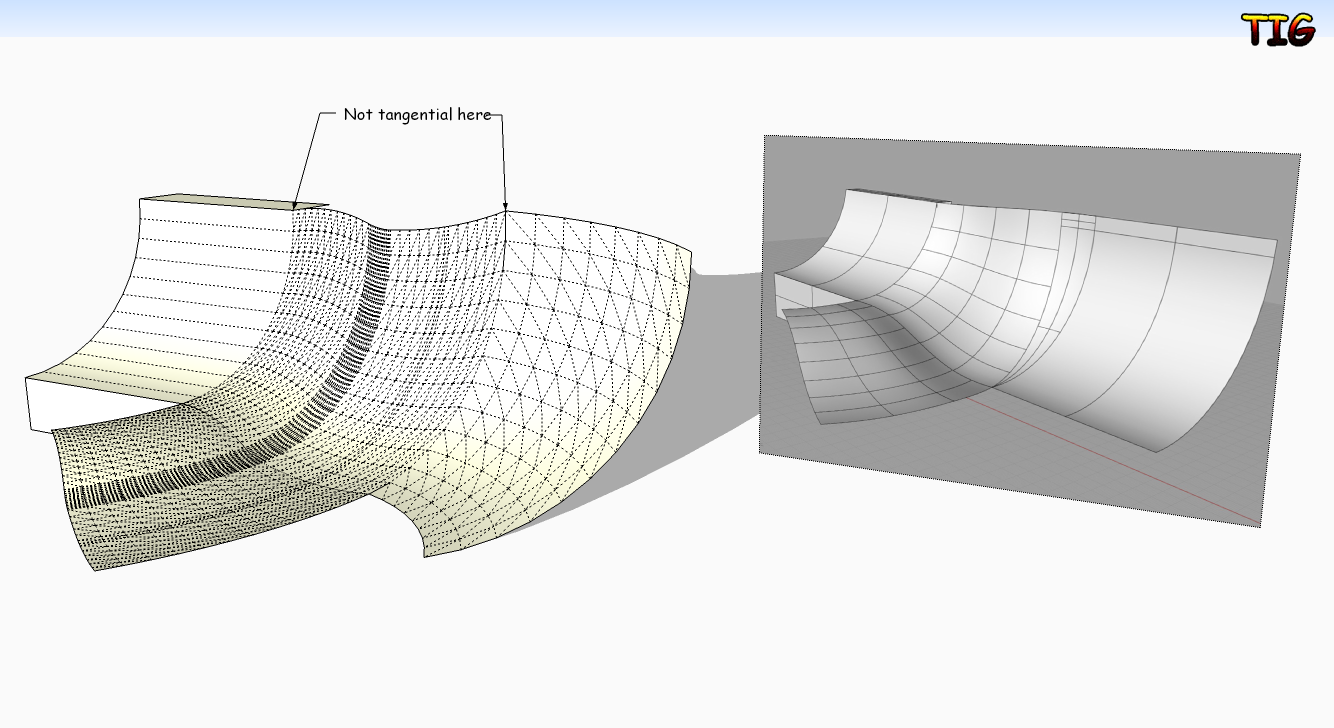
-
Yea, the idea was that you build surfaces out of quad or tri-patches. For either side of a patch you can add another tri/quad-patch and you keep going like that. Some align tools that would make one patch align to another patch is something I hope to be able to do.
In 3DSMax, when you have connected patches they start out so the control handles are linked to each other. Rotate one of the handle of one control points affects the other handles for that point - effectively ensuring tangent surfaces. If you use Ctrl when you move the control handles you make that handle act independently from the rest.
That's the rough outline I'm working after now. Just began on putting some code together. Not sure how long this project will take. There is a possibility that I might make this my first commercial plugin. Will see how after the first prototype - then I should have a better idea of how much work it'd be.
-
It seems to me that there's a difference between "impossible" and "really difficult."
Organic stuff can be really difficult but technically as long as you can make it from triangles any shape should be possible, with the limitation of an object with an huge amount of polygons.
I've had some discussions with a friend who uses Rhino. He's come up with some cool shapes and stuff and challenged me, 'I'll bet you can't do THAT in Sketchup.' Typically with a plugin or 2 I'm able to recreate his shape without too much problem. The big secret, though, is that SU tends to fall apart not with the complicated stuff but with the rather mundane. Once I create that shape how easy is it for me to manipulate compared to Rhino? What if he were to ask me something simple like, UV map this sphere (I'm aware of Whaat's plugin here but I don't count it since it stretches the ends and has a lot of limitations, no fault of Whaat's)? Or perhaps, create a simple box...that's .000001m in all directions?
-Brodie
Advertisement
